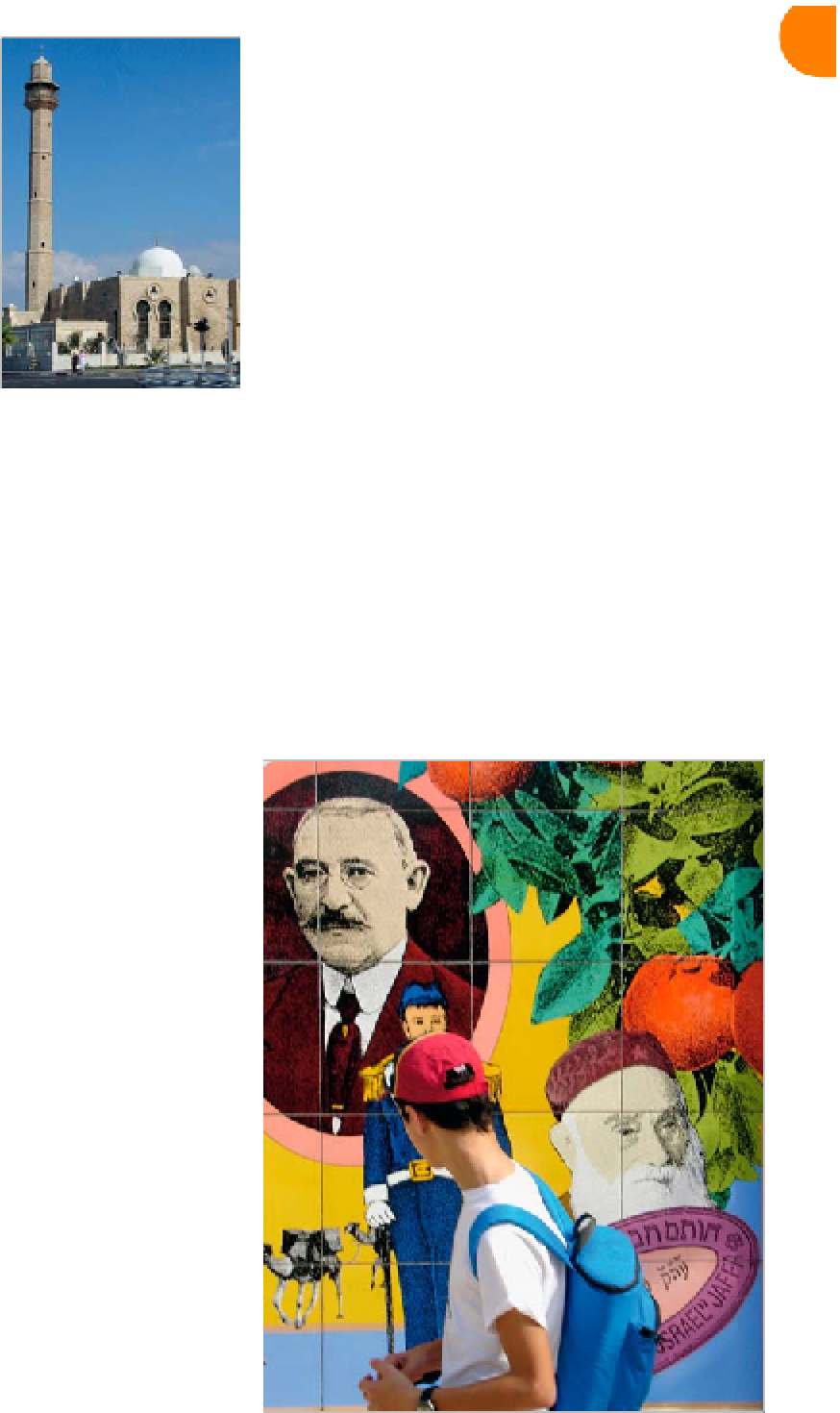Travel Reference
In-Depth Information
a purpose-built, black-glass
structure in attractive
Charles
Clore Park
on the seafront.
The park is a venue for many
of the city's big open-air
events, including the annual
Love Parade.
Etzel Museum 1947-1948
South Herbert Samuel Promenade.
Tel
(03) 517 2044.
l
with orange trees and tiled
murals, is a popular place to
meet and relax.
Nearby, the
Rokach House
Museum
occupies the former
home of Shimon Rockach,
one of the founding fathers of
Neve Tzedek. Inside, photos
and documents illustrate the
daily life of the community at
the end of the 19th century.
A few doors away, the
Nahum Gutman Museum
is dedicated to another of
Israel's best-known artists, a
Russian-born painter who was
also admired forhis children's
topics. As well as displaying
a small collection of Gutman's
work, the galleries are used
for temporary exhibitions.
E
Suzanne Dellal Center
6 Yehieli Street.
Tel
(03) 510 5656.
l
E
Rokach House Museum
36 Shimon Rockach Street.
Tel
(03)
#
8:30am-4pm
Sun-Thu.
P
Neve Tzedek
Neve Tzedek is where Tel
Aviv began. The settlement
was founded on empty sandy
flats in the late 1880s by a
group of Jewish families keen
to escape overcrowding in
the port of Jaffa. Today, the
area retains the feel of a small
village, with narrow lanes
lined by high walls and a
strange mix of architectural
styles. Decades of neglect are
currently being reversed by
an energetic programme of
renovation and restoration.
At the heart of the district is
the
Suzanne Dellal Centre
for
dance and drama. It boasts
four performance halls in a
building that was once a local
school. The main courtyard,
Attractive Hassan Bek Mosque,
founded by a local governer
Independence Hall
(Beit Ha-
Tanakh) at No. 6 was once
the residence of the first
mayor,Meir Dizengoff. This
is also where Ben Gurion
declared the independence
of Israel on 14 May 1948. The
museum's Hall of Declaration
remains as it was on that day,
with original microphones
onthe table and a portrait
of Herzl,the Zionist leader.
Nearby 23 Allenby Street is
now the
Haganah Museum
.
The Haganah was the
clandestine pre-1948 military
organisation that later became
the Israeli army.
E
Independence Hall
16 Rothschild Boulevard.
Tel
(03)
l
510 0655.
#
10am-2pm Fri, Sat.
www
.rokach-house.co.il
E
Nahum Gutman Museum
21 Shimon Rokach Street.
Tel
(03) 516 1970.
l
#
10am-4pm
Sun-Wed; 10am-7pm Thu; 10am-
2pm Fri; 10am-5pm Sat.
www
.gutmanmuseum.co.il
l
517 3942.
#
9am-2pm Sun-Thu.
E
Haganah Museum
23 Rothschild Boulevard.
Tel
(03)
l
560 8624.
#
9am-4pm Sun-Thu.
P
Manshiye
Manshiye is the coastal
neighbourhood that acts as
a buffer between the twin
municipalities of Tel Aviv and
Jaffa
(see pp174-5)
. Its most
distinguished landmark is the
little
Hassan Bek Mosque
on
the main seafront road, built
in 1916 by a governor of Jaffa
of the same name. During the
1948 War, Arab soldiers used
the mosque's minaret as a
firing position; this is one of
the episodes recorded in the
nearby
Etzel Museum 1947-
1948
, which is dedicated to
the Israeli defence forces and
their role in this particular
conflict. Historical documents,
photos, newspaper clippings
and weapons are exhibited in
The history of Neve Tzedek in tiled murals at the Suzanne Dellal Centre




















